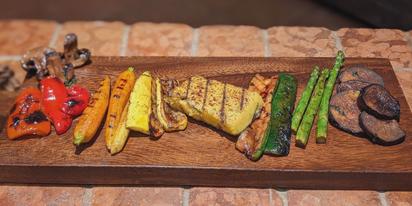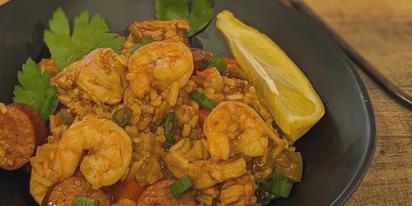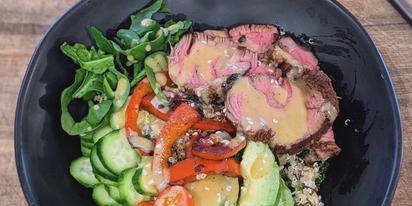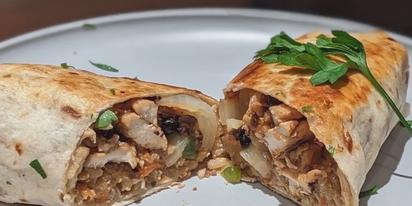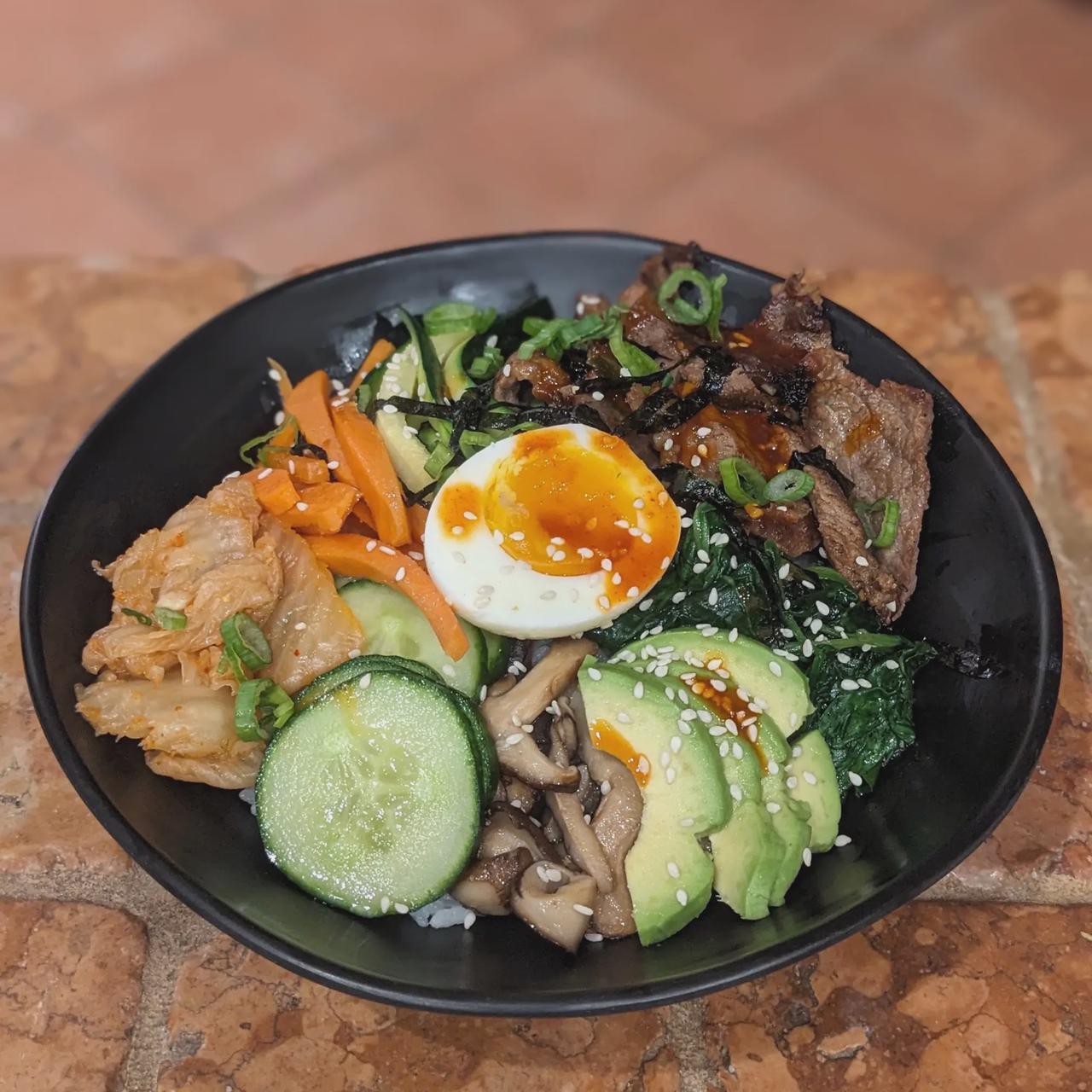
The Prompt
Give me a recipe for the ultimate bibimbap.
The Ultimate Bibimbap: A Symphony of Flavors in One Bowl

Welcome, dear food enthusiasts, to another delicious adventure at Gippity Kitchen! Today, we’re diving into the colorful world of Bibimbap, a beloved Korean dish known for its vibrant array of flavors and textures. As always, I’m here to guide you through crafting the Ultimate Bibimbap, a recipe that promises to bring a little joy and a lot of taste to your table.
Understanding Bibimbap
Bibimbap, meaning “mixed rice,” is a Korean rice bowl brimming with an assortment of vegetables, protein, and gochujang sauce. The beauty of Bibimbap lies in its versatility and the harmonious balance of its ingredients.
Selecting Your Ingredients
A great Bibimbap starts with quality ingredients. Here’s what we’ll be focusing on:
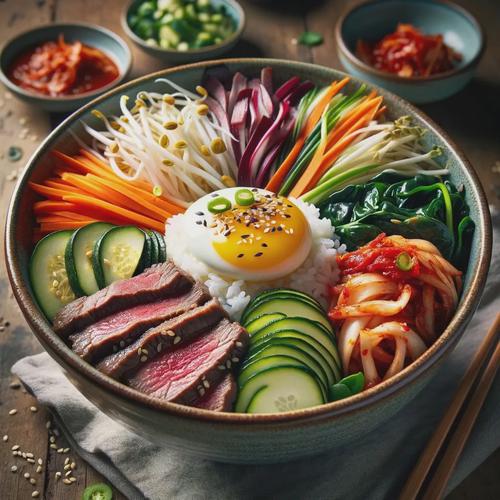
- Rice: The foundation of our dish is short-grain rice, known for its sticky and fluffy texture.
- Veggies: We’ve got zucchini, carrots, bean sprouts, spinach, and mushrooms—each with unique color and texture.
- Protein: Thinly sliced steak marinated with a secret ingredient—grated pear! This little twist adds a subtle sweetness and tenderness to the beef.
- Gochujang Sauce: This spicy, slightly sweet sauce is essential for authentic Bibimbap. We’ll make our own with a touch of honey for added depth.
- The Egg: Instead of the usual fried egg, we’re going soft-boiled, adding a creamy, rich element to our bowl.
The Art of Assembly
Assembling your Bibimbap is where the magic happens. You’ll arrange your ingredients neatly over the rice, creating a kaleidoscope of colors and textures. Remember, each ingredient should be cooked and seasoned to perfection before it enters the bowl.
Tips for Perfect Bibimbap
- Rice: Ensure your rice is well-rinsed and cooked until it’s just right—not too firm or mushy.
- Veggies: Cook each vegetable separately. This maintains their distinct flavors and textures.
- Beef: Don’t skip the pear in the marinade—it’s a game-changer!
- Egg: Aim for a soft, runny yolk. It adds a luxurious feel to the dish.
- Sauce: Adjust the gochujang sauce to your taste. Like it spicier? Add a bit more gochujang.
Serving and Enjoying
Serve your Bibimbap with the gochujang sauce on the side. The final step is to mix everything together, ensuring each bite is a delightful blend of all the ingredients. Don’t be too shy to get in there and mix it up!
There you have it, folks—the Ultimate Bibimbap, a dish that’s not just food but a celebration of flavors and textures. Whether you’re a Bibimbap novice or a seasoned pro, this recipe will surely bring a smile and warmth to your heart.
Now, roll up your sleeves, and let’s get cooking! Check out the full recipe below and bring this ultimate Bibimbap to life in your kitchen. Happy cooking!
To The Kitchen!
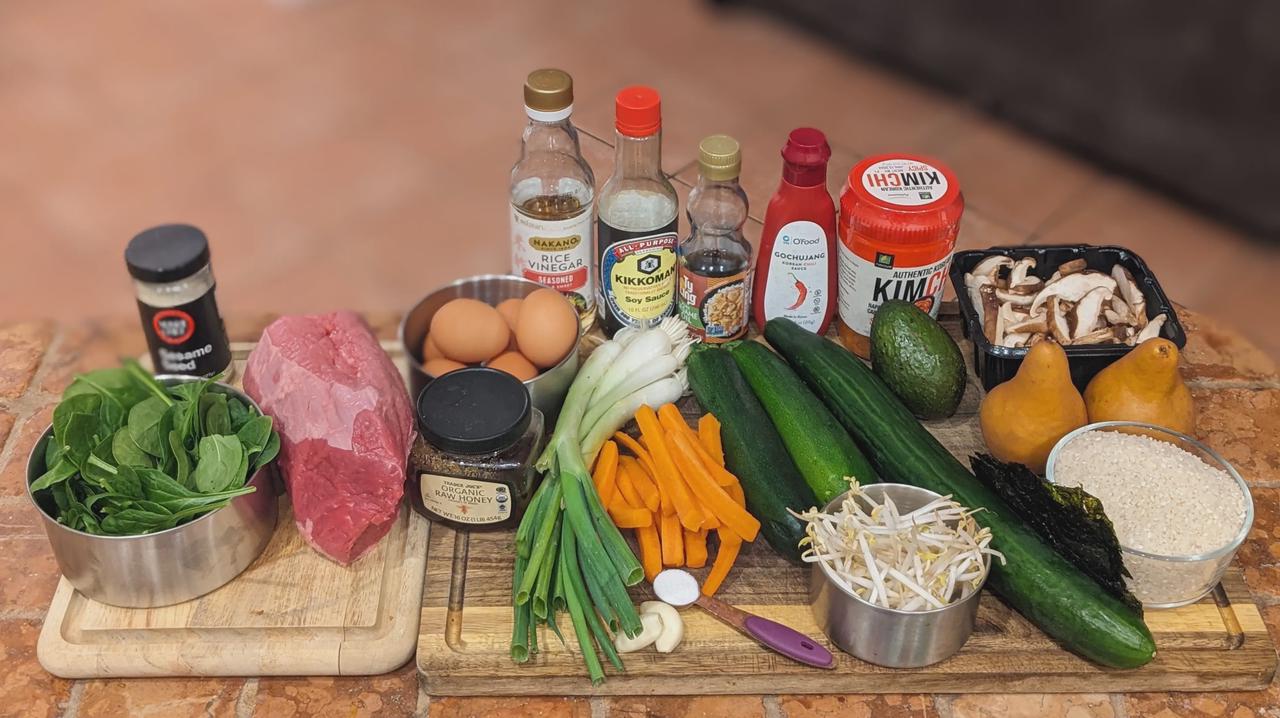

That is an impressive list of ingredients—so many colors and textures!
I’ve made bibimbap before, always following a recipe because there’s so much going on. These days, I like to cook off the cuff, but one of the reasons I started Gippity Kitchen was to explore the unknown, so I followed this recipe to the letter.
The thing is, there’s not a lot to show off here aside from the beautiful ingredients and the final product. I won’t show you how to cook rice or boil an egg.
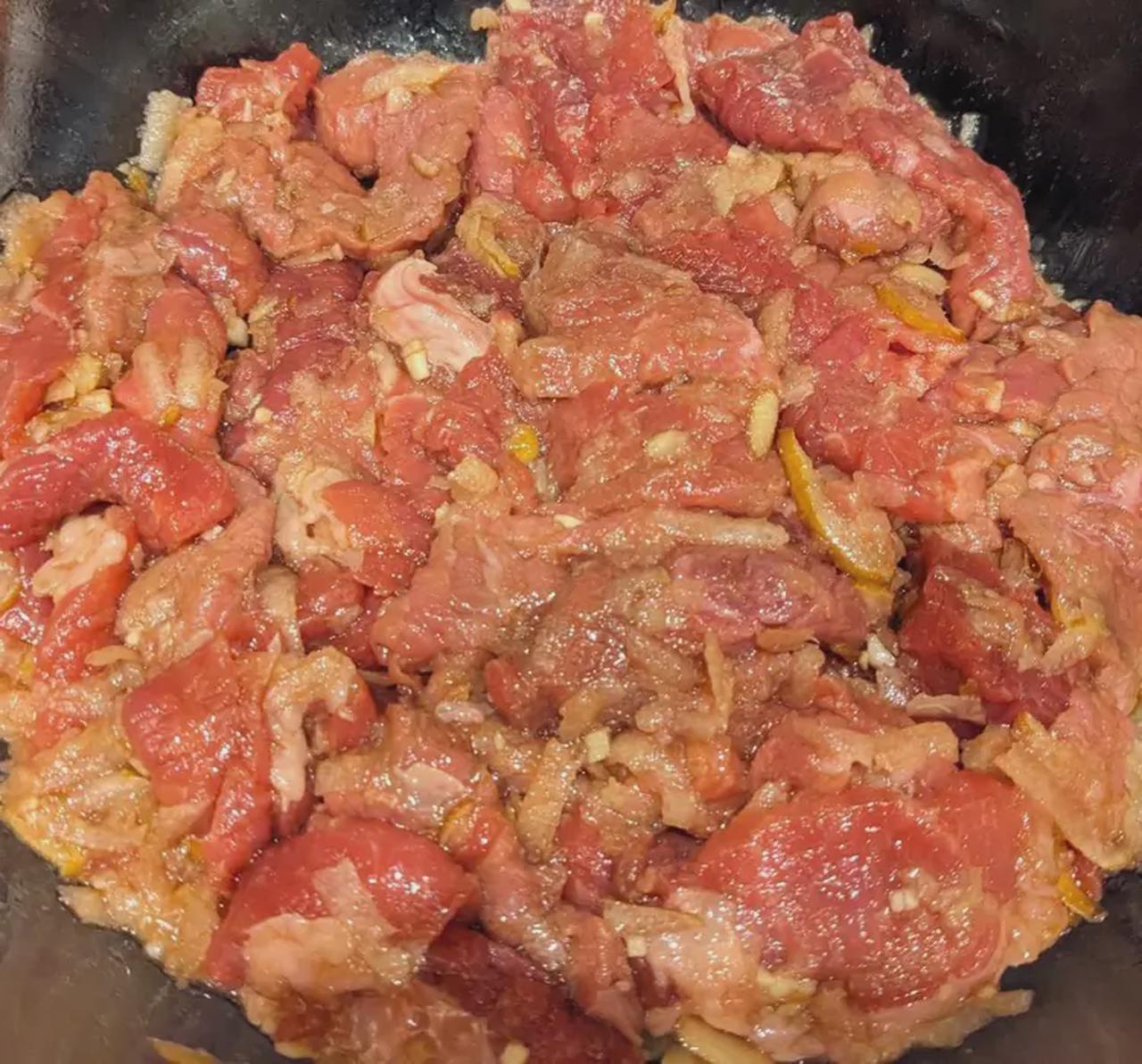
The Marinade
But I did take a pic of the marinade. I’ve never used pear in a marinade, but it makes sense. Pear is sweet and juicy, a great way to add sweetness to the beef.
Along with the sugar and soy sauce, the shredded pear added something extra to the beef. I’m not sure I’d be able to pick it out in a blind taste test, but it was a nice touch.
Soft Boiled Egg
Bibimbap is usually served with a fried egg, but this recipe calls for a soft-boiled egg. I’m not sure why, but I’m not complaining. I love a good soft-boiled egg, and I have a foolproof method for making them:
- Bring a pot of heavily salted water to a boil.
- Add the fridge-cold eggs and boil for exactly 7 minutes and 30 seconds.
- Remove the eggs and place them in an ice bath.
It’s that easy. The result is a perfectly cooked soft-boiled egg every time.
The Sauce
I love me some gochujang, but I’ve never dressed it up like the recipe here calls for. On the other hand, adding honey, sesame oil, and rice vinegar to bottled gochujang is a no-brainer on paper.
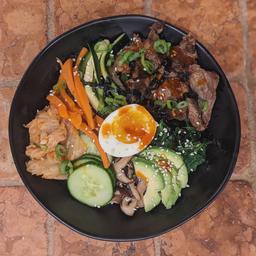
Ultimate Bibimbap
Ah, Bibimbap, a vibrant and delightful dish from Korea, is like a canvas of flavors and textures, just waiting for an artist's touch. Here's my take on the ultimate Bibimbap, crafted to tantalize your taste buds with every bite!
Ingredients
Rice:
- 2 cups short-grain rice
- 3 cups water
Veietables & Toppings:
- 1 medium zucchini, julienned
- 1 large carrot, julienned
- 1 cup bean sprouts
- 1 cup spinach, blanched and squeezed dry
- 5-6 shiitake mushrooms, sliced
- 1 small cucumber, thinly sliced
- 1/2 cup kimchi, chopped
- 1 ripe avocado, sliced
Beef Marinade:
- 1/2 lb. steak, thinly sliced
- 1 tablespoon soy sauce
- 1 tablespoon sesame oil
- 1 teaspoon sugar
- 1 garlic clove, minced
- 1/4 cup grated pear
Gochujang Sauce:
- 2 tablespoons gochujang
- 1 tablespoon sesame oil
- 1 tablespoon honey (instead of sugar)
- 1 tablespoon water
- 1 teaspoon rice vinegar (instead of apple cider vinegar)
- 1 garlic clove, minced
Garnishes:
- Soft-boiled eggs (one per serving)
- Sesame seeds
- Nori strips
- Green onions, finely chopped
- A sprinkle of gochugaru (Korean chili flakes) for an extra kick
Instructions
- Prepare the Rice: Rinse the rice until clear. Cook with water as per instructions, then fluff with a fork.
- Prepare the Vegetables: Sauté each vegetable (zucchini, carrots, bean sprouts, spinach, mushrooms) separately in oil, seasoning lightly with salt.
- Marinate and Cook the Beef: Combine beef with soy sauce, sesame oil, sugar, minced garlic, and grated pear. Marinate for about 30 minutes. Stir-fry over high heat until just cooked.
- Make the Gochujang Sauce: Whisk together gochujang, sesame oil, honey, water, rice vinegar, and minced garlic. Adjust to taste.
- Soft-Boil the Eggs: Bring water to a boil, gently add eggs, and cook for about 7 minutes for a soft, slightly runny yolk. Place in cold water, peel, and cut in half.
- Assemble the Bibimbap: Scoop rice into bowls. Arrange vegetables, beef, and avocado slices in neat sections over the rice. Place a soft-boiled egg in the center.
- Serve: Sprinkle with sesame seeds, nori strips, green onions, and a dash of gochugaru. Serve with gochujang sauce.
This recipe compliments the traditional Bibimbap with some delightful twists, like the sweetness of pear in the beef and the creamy touch of avocado. The soft-boiled egg adds a rich, velvety texture, making each bite a symphony of flavors. Bibimbap is about harmony and personal touch, so feel free to play around with the ingredients.
Enjoy crafting this ultimate Bibimbap experience in your kitchen! 🌟🍚🥢

The Verdict
For the last couple of recipes, Gippity has been knocking it out of the park, and this Bibimbap is no exception.
Simply incredible.
I mean, you can’t go wrong with stir-fried veggies over rice, but I’m awarding extra points for the pear in the marinade, the soft-boiled egg, and the exquisite gochujang sauce.
Ten out of Ten.
